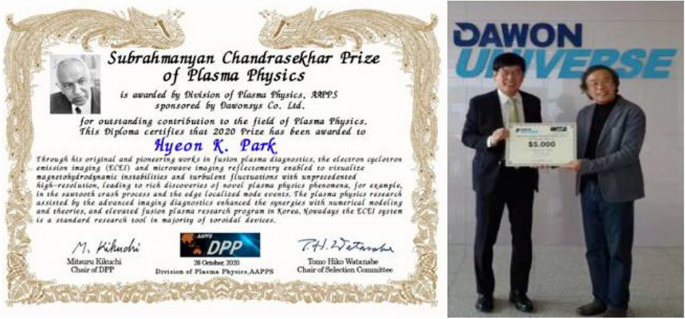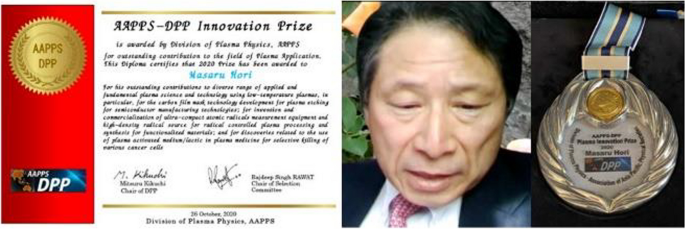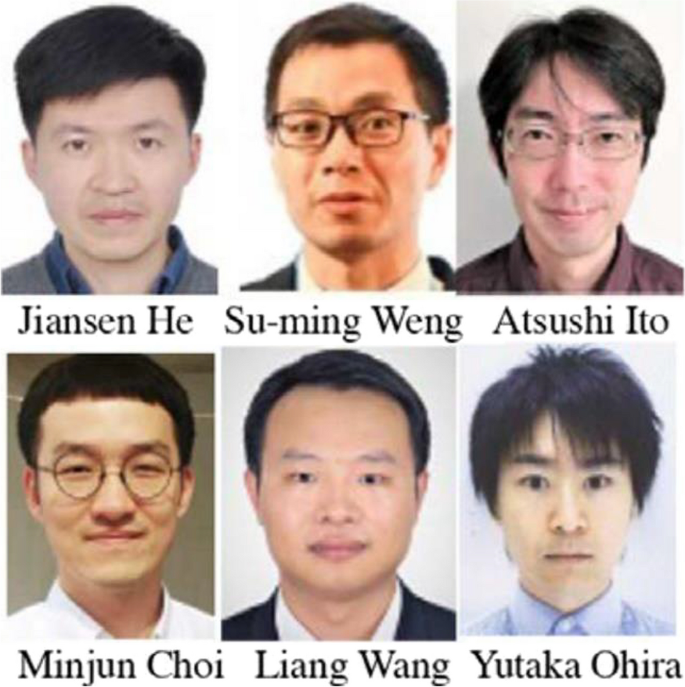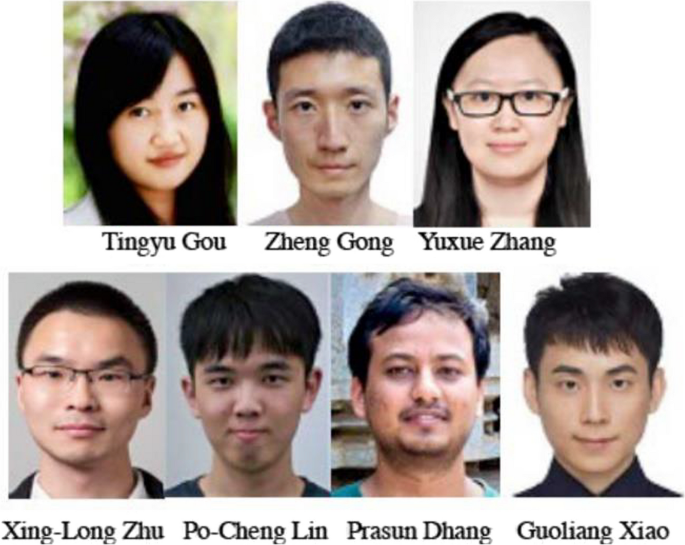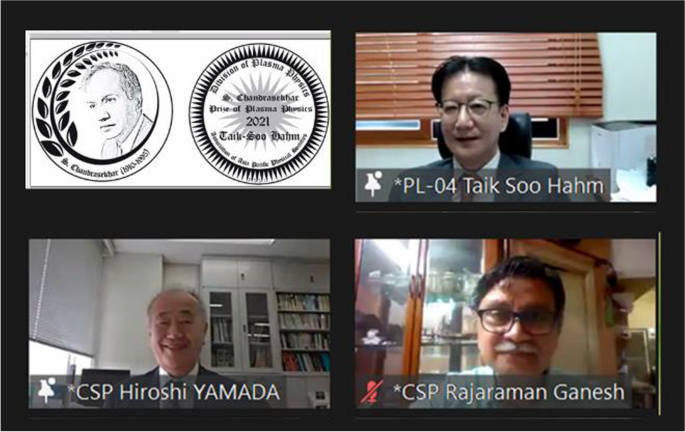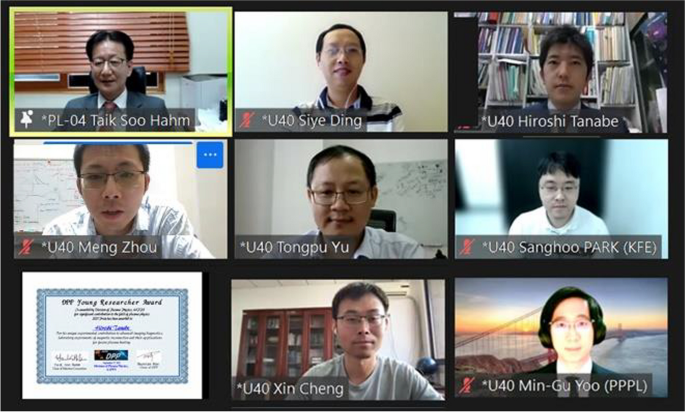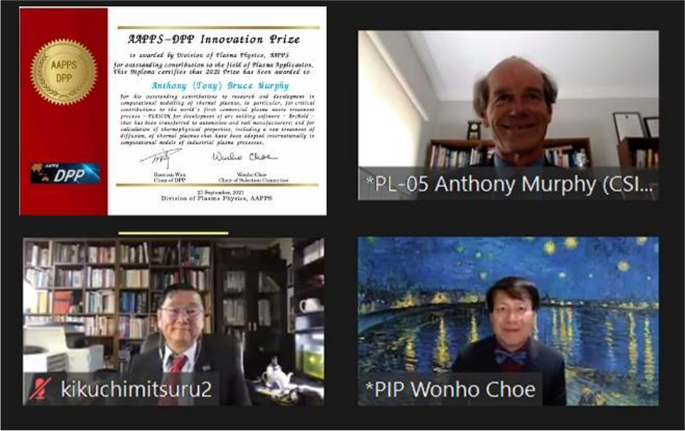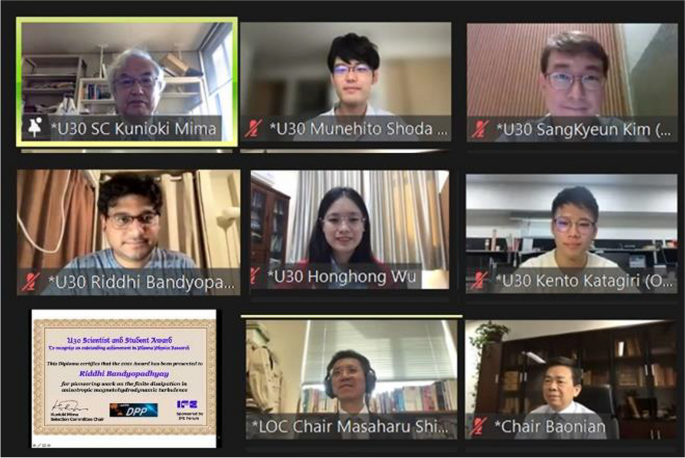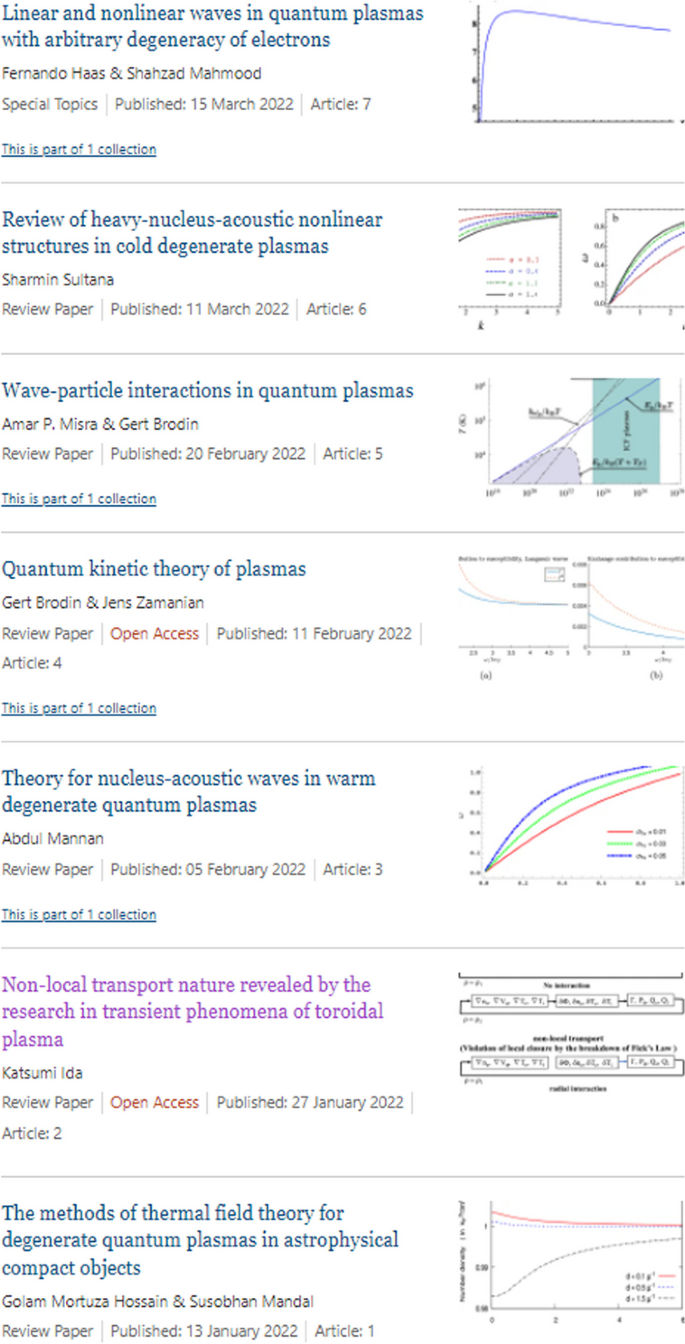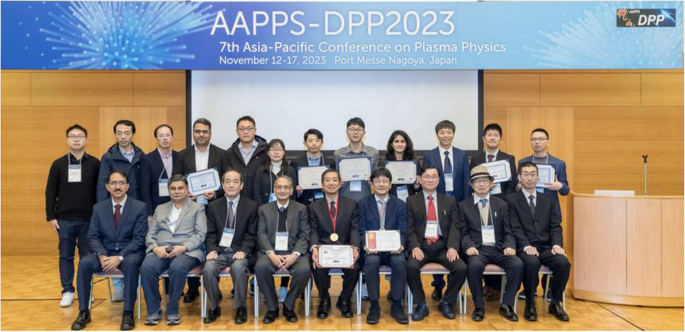4 Annual News from the Division of Plasma Physics (DPP)
4.1 Baonian Wan
4.1.1 AAPPS-DPP Membership Distribution
AAPPS-DPP started with 92 founding members in 2014. As of April 1, 2022, the DPP has 2551 members around the world. The regional distribution of our members is as follows: India (1196), Beijing (477), Japan (303), Korea (134), US (91), Australia (52), Taipei (38), France (33), Nepal (30), Germany (27), UK (23), Thailand (19), Italy (17), Belgium (15), Malaysia (14), Pakistan (12), Philippines (9), Russia (9), Indonesia (5), Iran (5), Singapore (5), Vietnam (4) , Austria (3), the Netherlands (3), Bangladesh (3), New Zealand (3), Laos (2), Romania (2), Spain (2), Switzerland (2), Argentina (1), Canada (1), Colombia (1), Czech Republic (1), Egypt (1), Hungary (1), Ireland (1), Israel (1), Myanmar (1), Portugal (1), Saudi Arabia (1), Slovakia (1) and Sweden (1).
4.1.2 4th DPP Annual Conference in 2020
Division of plasma physics (DPP) annually holding Asia-Pacific conference on Plasma Physics. The fourth annual conference (AAPPS-DPP2020) was held as remote online e-conference using Zoom system from October 26-31, 2020.
AAPPS-DPP2020 consists of 40 plenary talks, 36 topical plenary talks, 328 invited talks, 96 oral talks, and 47 poster presentations. Cross-disciplinary session focused on magnetic reconnection led by Yasushi Ono having 34 talks. Fundamental session is fundamental discipline common to all plasma physics area and had joint session with magnetic fusion plasma led by Patrick Diamond and Taik Soo Hahm having 64 presentations. Basic session discussed methods (computation and diagnostics) common to all plasma physics as well as small scale plasma research and dusty/quantum plasmas led by R. Ganesh having 64 presentations. Applied session discussed applied plasma physics such as semi-conductor, medicine, agriculture, etc led by Wonho Choe having 50 presentations. Laser plasma session discussed Laser-plasma interaction, Laser fusion, wake-field acceleration led by Yutong Li having 81 presentations. Space /Geomagnetism session discussed mostly space plasma physics and magnetic reconnection on space plasma led by Tohru Hada having 45 presentations. Solar/Astro session discussed solar plasma physics and astro plasma physics led by Peng Fei Chen having 55 presentations. Magnetic Fusion session is the largest session having two parallel sessions (divided into core and edge) led by Min Xu, SiWoo Yoon, Kazunobu Nagasaki, Liang Wang having 148 presentations. Among them, 2020 S. Chandrasekhar lecture is given by Hyeon Park on ECE imaging diagnostics and 2020 plasma innovation lecture is given by Massaru Hori on plasma etching and medicine. We also celebrated 6 U40 winners and 7 U30 winners to give oral talks.
DPP select S. Chandrasekhar Prize annually to recognize outstanding contributions to plasma physics since 2014. Chandrasekhar prize selection committee chaired by TH Watanabe selected 2020 laureate is Prof. Hyeon K. Park (UNIST). Especially on this development of ECE imaging diagnostics to uncover rich phenomena in Tokamaks (Fig. 1).
Year 2020 is 2nd year of “AAPPS-DPP Plasma Innovation Prize” to recognize outstanding contributions to experimental and / or theoretical research in all fields of plasma applications, focusing on impacts on industry. Plasma Innovation Prize selection committee chaired by R. Rawat selected 2020 laureate is Prof. Masaru Hori (Nagoya Univ.) especially for his inventions such as plasma activated medium in plasma medicine (Fig. 2).
DPP is recognizing annually young talented plasma researchers not more than 40 years old since 2016 as AAPPS-DPP Young Research Award (U40). U40 selection committee chaired by D. Escande selected 6 young talents; Jiansen He (Space, Peking U.), Su-Ming Weng (Laser, Shanghai Jiao Tong U.), Atsushi Ito (Basic, National Institute for Fusion science), Minjun Choi (Fundamental, Korean Institute of Fusion Energy), Liang Wang (Magnetic Fusion, Institute of Plasma Physics, CAS), Yutaka Ohira (Solar/Astro, U. Tokyo) as U40 winners at DPP2020. Winners received cash prize 500USD, plates and certificate (Fig. 3).
DPP is recognizing young talented doctoral scientists/ students not more than 30 years old since 2018 as AAPPS-DPP U30 Doctoral Scientist /Student Award. This award is sponsored by IFE-Forum. 2020 U30 award selection committee chaired by K. Mima selected 2020 Winners are Tingyu Gou (SA, USTC), Zheng Gong (Laser, Peking U.), Yuxue Zhang(Laser, Peking U.), Xing-Long Zhu (Laser, SJTU), Po-Cheng Liu (Basic, NCU), Prasun Dhang (SA, Tsinghua U.), Guoliang Xiao (Magnetic Fusion, SWIP) (Fig. 4). Winners received cash prize 300USD, plate, and certificate.
4.1.3 5th DPP Annual Conference in 2021
The fifth annual conference (AAPPS-DPP2021) was held from September 26-October 1, 2021 as remote online e-conference using Zoom system due to COVID-19 pandemic. Nonetheless, conference was great success to have 1109 participants from 45 countries and regions all over the world. As for the gender balance, we had 184 female participants among 1109 total. Many female researchers joined from China, India and Japan, especially.
AAPPS-DPP2021 consists of 40 plenary talks, 51 topical plenary talks, 385 invited talks, 114 oral talks, and 59 poster presentations. There are 44 presentations in cross-disciplinary session, 93 presentations in fundamental session, 67 presentations in basic session, 88 presentations in applied session, 67 presentations in laser plasma session, 64 presentations space / geomagnetism session, 62 presentations in solar/astro session, 96 presentations in magnetic Fusion session 1 (Core plasma) and 64 presentations in magnetic Fusion session 2 (Edge plasma).
Chandrasekhar prize selection committee chaired by Hiroshi Yamada selected 2021 laureate is Prof. Taik Soo Hahm (SNU).
U40 selection committee chaired by TS Hahm selected 7 young talents; Hiroshi Tanabe (Fundamental, U. Tokyo), Min-Gu Yoo (Basic, PPPL), Sanghoo Park (Applied, KFE), Tong-Pu Yu (Laser, NUDT), Meng Zhou Space, Nanchang U.), Xin Cheng (Solar/Astro, Nanjing U.), Siye Ding (Magnetic Fusion, IPP-CAS) as U40 winners at DPP2021 (Figs. 5 and 6).
Plasma Innovation Prize selection committee chaired by W. Choe selected 2021 laureate is Dr. Anthony Murphy (Nagoya University) especially for his inventions such as plasma activated medium in plasma medicine.
2021 U30 award selection committee chaired by K. Mima selected 2021 Winners; Riddhi Bandyopadhyay (Fundamental, Princeton U.), Kento Katagiri (Laser, Osaka U.), Honghong Wu (Space, Peking U.), Munehito Shoda (Laser, SJTU), Po-Cheng Liu (Basic, NCU), Prasun Dhang (SA, NAOJ), Guanqi Dong (Magnetic Fusion, SWIP), Sang Kyeun Kim (Magnetic Fusion, SNU) (Figs. 7 and 8).
4.1.4 Status of Reviews of Modern Plasma Physics
Reviews of Modern Plasma Physics (RMPP) is a review journal specialized to plasma physics. The first volume (2017) published 10 articles. The second volume (2018) published 9 articles. The third volume (2019) published 15 articles. The fourth volume (2020) published 12 articles. The fifth volume (2021) published 15 articles. The sixth volume (2022) has published 7 articles until now. Recent publications are shown below (Fig. 9).
4.2 Abhijit Sen
4.2.1 7th Annual DPP Conference
The seventh annual conference of DPP (AAPPS-DPP2023) was held at Port-Messe, Nagoya, Japan during Nov 12-17, 2023. Figure 10 above shows the Opening session speakers and DPP award winners of 2023. A large number of presentations, totalling 661, were made in diverse areas of plasma physics and plasma applications. Table 1 shows a distribution of the presentations given as plenary, topical plenary, invited, oral talks and posters for the various sub-disciplines. The Cross-disciplinary session led by PH Diamond, E. Kim and TS Hahm had 38 presentations. The Fundamental session devoted to fundamental topics common to all plasma physics areas had a joint session with the Magnetic fusion plasma session led by R. Dewar and PJ Morrison and it had 61 presentations. The Basic session discussed methods common to all plasma physics as well as small scale plasma research and dusty/quantum plasmas and was led by S. Bhattacharjee, T. Yamada, F. Haas, Y. Feng, TH Watanabe, I. Murakami, M. Nishiura and K. Takahashi. It had 90 presentations. The Applied session discussed applied plasma physics topics such as semi-conductors, plasmas in medicine and agriculture and was led by Tao Shao, HH Kim, DH Lee, S. Ghorui, S. Xu, A. Mai- Prochnow, M. Keidar; it had 83 presentations. The Laser plasma session consisting of 63 presentations discussed Laser-plasma interactions, Laser fusion, wake-field acceleration and was led by Hyyong Suk, M. Chen, S. Fujioka, K. Lee, and PK Singh.
Table 1 Distribution of presentations
| Plenary | Top. Pl | Invited | Oral | Poster | Total | |
|---|---|---|---|---|---|---|
| Opening | 8 | - | - | - | - | 8 |
| Chandra & PIP | 2 | - | - | - | - | 2 |
| Corss Disciplinary | 4 | 4 | 21 | 9 | 0 | 38 |
| Fundamental | 4 | 0 | 33 | 11 | 13 | 61 |
| Basic | 4 | 0 | 33 | 17 | 36 | 90 |
| Applied | 4 | 0 | 46 | 17 | 16 | 83 |
| Laser plasma | 4 | 0 | 34 | 14 | 11 | 63 |
| Space/Geomag | 4 | 3 | 27 | 11 | 10 | 55 |
| Solar/Astro | 4 | 0 | 27 | 14 | 3 | 48 |
| Magnetic Fusion | 5 | 0 | 67 | 20 | 51 | 173 |
| Organized Session | 3 | 6 | 29 | 0 | 0 | 38 |
| Poster Prize | 1 | - | - | - | - | 1 |
| Closing | 1 | - | - | - | - | 1 |
| Total | 48 | 13 | 317 | 143 | 140 | 661 |
The Space / Geomagnetism session led by Y. Omura, P. Yoon, and QM Lu had 55 presentations devoted to space plasma physics and magnetic reconnection. The Solar/Astro session discussed solar plasma physics and plasma astro-physics. It was led by PF Chen, R. Matsumoto and J. Cho with 48 presentations. The Magnetic Fusion session (Core and Edge plasma) was led by Jae-Min Kwon, M. Xu, E. Narita and YS Na and had 173 presentations. A special Organized Session was led by Katsumi Ida, Y. Liang, CK Sung and had 38 presentations. Among them were the 2023 S. Chandrasekhar lecture given by Katsumi Ida and the 2023 Plasma Innovation Lecture given by Takayuki Watanabe. We also had 8 lectures from the U40 winners and 6 lectures from the U30 winners.
The conference participants came from a wide range of countries/regions and had an excellent representation of women scientists. Table 2 shows the distribution of region/countries and gender balance. Most notably the present conference saw a significant rise in participants from Pakistan and Philippines and also 2 participants from the South American continent (Brazil). We also saw a rise in participants from other leading western plasma societies e.g. 42 from APS and 58 from EPS. As for gender balance, we had 121 female participants. Many female researchers joined from China and Pakistan. A highlight of the conference was a mini-symposium entitled Women in Plasma Physics that was organized by A. Mai-Prochnow and Anthony Murphy. It discussed important challenges faced by women scientists and made several useful recommendations. It is hoped that this workshop will be a regular feature of all subsequent AAPPS-DPP conferences and its recommendations will be implemented by the society and the community. Apart from this mini-symposium there were two other satellite meetings: a Space plasma Workshop on Wave-particle interaction organized by Yuto Kato and mini-symposium devoted to the private sector Fusion that was organized by Helical Fusion.
Table 2 Regional distribution of participants
| Region | No | Female | Presenters | Region | No | Female | Presenters |
|---|---|---|---|---|---|---|---|
| Japan | 286 | 38 | 214 | Swiss | 3 | 1 | 3 |
| Beijing | 185 | 41 | 204 | Singapore | 3 | 0 | 5 |
| India | 41 | 7 | 55 | Spain | 3 | 0 | 3 |
| USA | 41 | 4 | 44 | Nepal | 2 | 0 | 2 |
| Korea | 33 | 4 | 33 | Malaysia | 2 | 0 | 2 |
| England | 15 | 3 | 14 | Brazil | 3 | 0 | 2 |
| Australia | 14 | 3 | 17 | Austria | 3 | 0 | |
| France | 12 | 4 | 9 | Greece | 2 | 0 | 3 |
| Taipei | 11 | 2 | 11 | Canada | 1 | 0 | 2 |
| Germany | 9 | 4 | 9 | Denmark | 1 | 0 | 1 |
| Pakistan | 8 | 5 | 9 | Israel | 1 | 0 | 1 |
| Philippines | 6 | 3 | 6 | Slovenia | 1 | 0 | 1 |
| Belgium | 5 | 1 | 6 | Thailand | 1 | 0 | 1 |
| Italy | 4 | 1 | 4 | Total | 694 | 121 | 661 |
4.2.2 AAPPS-DPP S. Chandrasekhar Prize
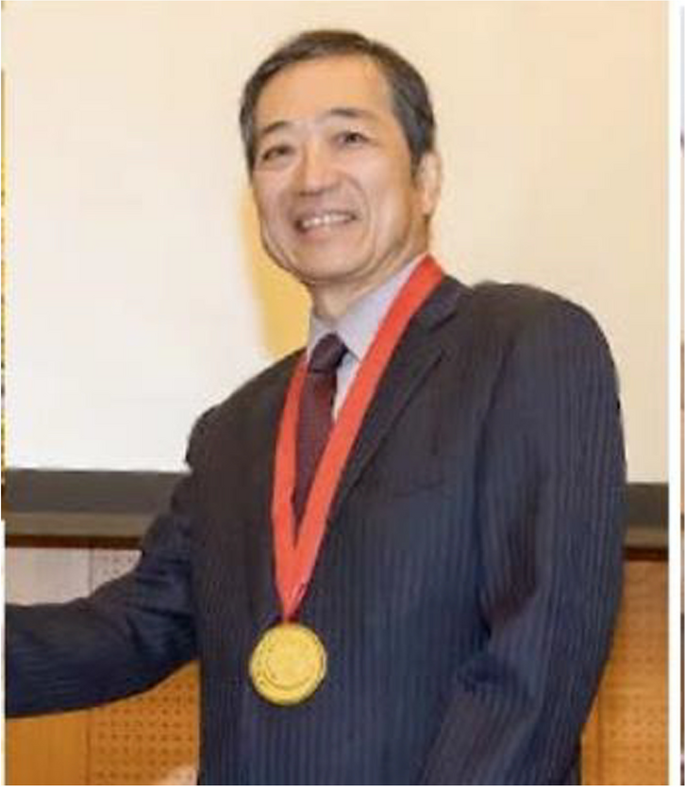
Each year the DPP awards the S. Chandrasekhar Prize to recognize outstanding contributions in plasma physics. The prize was instituted in 2014. The 2023 winner was Prof. Katsumi Ida of NIFS “For his pioneering contributions to experimental discoveries of a variety of turbulent states of magnetic fusion plasma, including turbulence-driven flow, electric field shear in H-mode state, and the effects of magnetic topologies and non-locality on transport”.
A cash prize of 5,000 USD was sponsored by Larsen & Toubro Ltd, India. The Medal was sponsored by IPR/PSSI.
4.2.3 AAPPS-DPP Plasma Innovation Prize
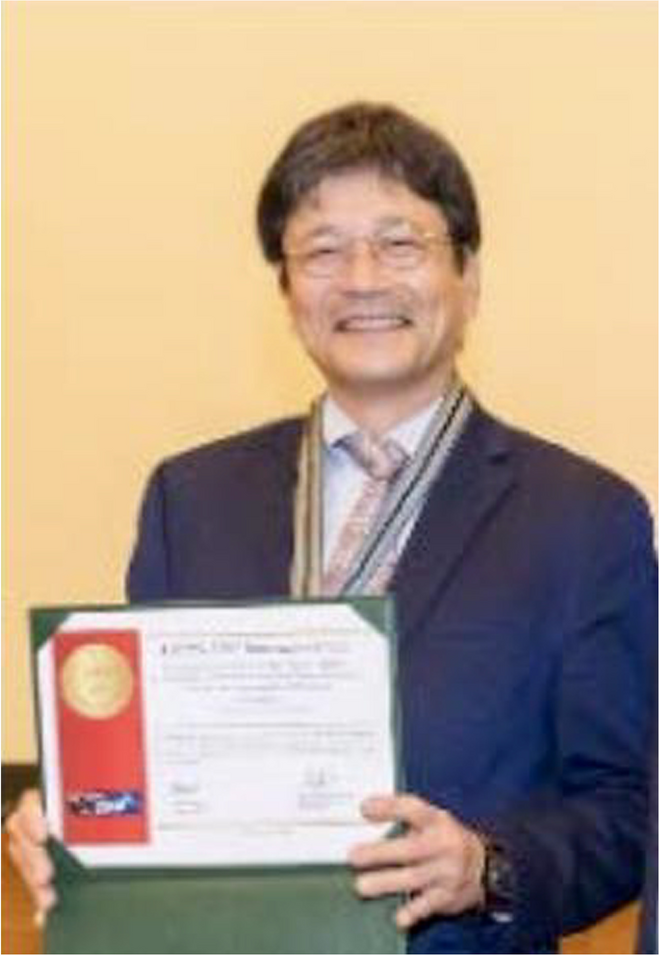
The Plasma Innovation Prize, instituted in 2019, recognizes outstanding contributions to experimental and / or theoretical research in all fields of plasma applications, focusing on impacts on industry. The 2023 prize winner was Prof. Takayuki Watanabe of Kyushu University “For his outstanding contributions to applications of thermal plasma processing, in particular, for nanomaterials synthesis based on sophisticated modeling and experimental investigation; for invention and commercialization of plasma waste treatment by water thermal plasma; and for invention of multiphase AC arc which led to successful industrial application of glass melting technology.
A cash prize of 4,000 USD was sponsored by INOX India Ltd, India.
4.2.4 Other Awards
AAPPS-DPP Young Researcher Award (U40): DPP also recognises outstanding work by young researchers (not more than 40 years of age) who are given a cash prize of 500 USD, a plaque and a certificate. This year there were seven awardees as listed below.
- Dr. Shinya Maeyama (NIFS, Japan) in Fundamental Plasma Physics
- Dr. Pankaj Attri (Kyushu Uni and India) in Applied Plasma Physics
- Dr. Yang Wan (Zhengzhou U, China) in Laser Plasma Physics
- Dr. Shiyong Huang (Wuhan U, China) in Space/Geomag. Plasmas
- Dr. Ting Li (NAO, CAS, China) in Solar/Astro plasmas
- Dr. Rui Ding (IPP,CAS, China) in Magnetic Fusion Plasmas
- Dr. Xiaodi Du (GA and China) in Magnetic Fusion Plasmas
U30 Scientist and Student Award: This award sponsored by IFE-Forum recognises young talented doctoral students/scientists who are not more than 30 years old. This year there were six awardees as listed below:
- Dr. Swarnima Singh (IPR, India) in Basic Plasma Physics
- Dr. Masato Ota (NIFS, Japan) in Laser Plasma Physics
- Dr. Zhi-Yang Lu (Peking U, China) in Space Plasma Physics
- Dr. Yajie Chen (MPS/Peking U, China) in Solar/Astro Plasmas
- Dr. Yi Zhang (SWIP, China) in Magnetic Fusion Plasmas
- Dr. Jaemin Sco (Chung-Ang U, China) in Magnetic Fusion Plasmas
AAPPS-DPP2023 Poster Prizes: These prizes are given to outstanding poster presentations by both students and young/senior researchers. This year 30 posters out of a total of 140 were selected for this honour. The winners received a Springer book on plasma physics and a certificate.
4.2.5 AAPPS-DPP2024
The next annual conference of AAPPS-DPP will be held in Grand Swiss-Bel Hotel, Malacca, Malaysia during Nov. 3-8, 2024. It will be co-hosted by the Malaysian Institute of Physics (MIP).
4.2.6 RMPP Journal
The Reviews of Modern Plasma Physics (RMPP) is a review journal devoted to plasma physics that was started in 2017. Since then it has been growing steadily. The 1st volume (2017) published 10 articles. The 2nd volume (2018) published 9 articles and 3rd volume (2019) published 15 articles, the 4th volume (2020) published 12 articles, 5th volume (2021) published 13 articles, volume 6 (2022) published 41 articles, volume 7 (2023) published 32 articles. The journal has been accepted for Scopus index as of May 11, 2023 and the Emerging Source Citation Index (ESCI) in Web of Science in 2024. In June 2024, RMPP received a Cite Score 2023 of 5.9. The Impact Factor from WoS will be released in 2025
References
-
J.J. Hopfield, Neural networks and physical systems with emergent collective computational abilities. Proc. Natl. Acad. Sci. 79(8), 2554–58 (1982)
-
J.J. Hopfield, Neuronswith graded response have collective computational properties like those of two-state neurons. Proc. Natl. Acad. Sci. 81(10), 3088–92 (1984)
-
J.J. Hopfield, Artificial neural networks. IEEE Circuits Devices Mag. 4(5), 3–10 (1988)
-
G.E. Hinton, Computation by neural networks. Nat. Neurosci. 3(11), 1170 (2000)
-
J.J. Hopfield, Pattern recognition computation using action potential timing for stimulus representation. Nature 376(6535), 33–36 (1995)
-
Y. LeCun, Y. Bengio, G.E. Hinton, Deep learning. Nature 521(7553), 436–44 (2015)
-
A. Krizhevsky, I. Sutskever, G.E. Hinton, ImageNet classification with deep convolutional neural networks. Commun. ACM 60(6), 84–90 (2017)
-
D.E. Rumelhart, G.E. Hinton, R.J. Williams, Learning representations by back-propagating errors. Nature 323(6088), 533–36 (1986)
-
Editorial, 72% of SPM graduates prefer being influencers, E-Hailing drivers,” theSun, Aug 3, 2022. https://thesun.my/style-life/going-viral/72-of-spm-graduates-prefer-being-influencers-e-hailing-drivers-KX9536950. Accessed 24 Oct 2024.
-
R. Loheswar, Experts call for early-years STEM education to address critical engineering labour shortage in Malaysia. MalayMail, May 22, 2024. https://www.malaymail.com/news/malaysia/2024/05/22/experts-call-for-early-years-stem-education-to-address-critical-engineering-labour-shortage-in-malaysia/134795. Accessed 24 Oct 2024
-
R.P. Feynman, The Pleasure of Finding Things Out: The Best Short Works of Richard P. Feynman (Perseus Books, 1999)
-
Todd Siler, Breaking the Mind Barrier: The Artscience of Neurocosmology (Simon & Schuster, 1997)
-
R.S. Root-Bernstein, T. Siler, A. Brown, K. Snelson, ArtScience: integrative collaboration to create a sustainable future. LEONARDO 44(3), 192 (2011)
-
A. S. Eddington, Space, Time and Gravitation: An Outline of the General Relativity Theory (Cambridge University Press, 1920)
-
M. Kumar, Quantum: Einstein, Bohr, and the Great Debate About the Nature of Reality (W.W. Norton & Company, 2011)
-
Malaysia Education Blueprint 2013-2025, Prime Minister's Office of Malaysia. https://www.pmo.gov.my/wp-content/uploads/2019/07/Malaysia-Education-Blueprint-2013-2025.pdf
-
A. Osman, L. Halim, N.M. Arsad, Fundsof knowledge of the Semai Orang Asli children in science learning: a needs analysis. Int. J. Educ. 15(2), 48–65 (2023)
-
N. Z. Che Ghani, Implementation of Forest STEM Module based on Moral Values in Indigenous Education (Master’s thesis, Universiti Teknologi Malaysia, 2021)
Author information
Authors and Affiliations
Consortia
Contributions
Authors read and approved the final manuscript.
Ethics declarations
Competing interests
The authors declare that they have no competing interests.
Additional information
Publisher’s Note
Springer Nature remains neutral with regard to jurisdictional claims in published maps and institutional affiliations.


